Ethically Sourced Diamonds: How To Buy Diamonds With A Clear Conscience?
Picking out the ideal diamond is already a big task. In addition, we have become more tuned in to the origins of what we purchase. Keep reading to discover how to ensure your diamond is ethically sourced and conflict-free.
14K White Gold Radiant Cut Diamond Eternity Ring |
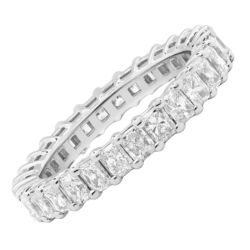
|
| Click on the Image |
Diamonds are timeless, adding sparkle to any occasion. However, your diamond should symbolize love or achievement. It should not be tied to conflict or unsafe practices. Diamonds sourced from problematic areas can dim the shine of even the brightest gem.
Learn how to ensure your diamond purchase aligns with ethical standards. That way, your biggest dilemma as a mindful buyer is simply choosing which diamond to cherish.
Table Of Contents
- 1) What Do You Understand by a ‘Conflict-Free Diamond?’
- 2) Understanding Blood Diamonds: The Dark Side of Diamond Mining
- 3) Are Conflict-Free Diamonds Genuine?
- 4) Where Do Conflict-Free Diamonds Originate?
- 5) What’s the Difference Between Conflict-Free And Ethically Sourced Diamonds?
- 6) Ethically Sourced Diamonds: Are Lab-Grown Gems the Answer?
- 7) What’s the Kimberley Process, And Can It Guarantee Conflict-Free Diamonds?
- 8) A Collaborative Approach to Combat Conflict Diamonds
- 9) Creating a Secure Chain of Custody for Diamonds
- 10) Promoting Ethical Responsibility in the Diamond Trade
- 11) Protecting Communities and Reinforcing Industry Standards
- 12) How Can You Be Confident You’re Buying a Conflict-Free Diamond?
|
|
What Do You Understand by a ‘Conflict-Free Diamond?’Back To Top |
A conflict-free diamond has not funded any civil unrest or wars. This term emerged as a response to the troubling concept of “blood diamonds.” Popularized by a well-known movie of the same name, ‘blood diamonds’ refer to gems mined in conflict areas, where their sale directly supports war efforts and turmoil.
14K Yellow Gold Fancy Array Lab-Grown Diamond Tennis Bracelet |
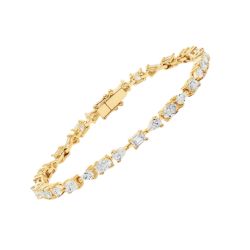
|
| Click on the Image |
|
|
Understanding Blood Diamonds: The Dark Side of Diamond Mining.Back To Top |
Blood diamonds come from regions controlled by rebel or terrorist groups, making them a significant issue for both human rights and the environment.
In these conflict zones, workers face horrifying conditions. They endure low wages, intimidation, and constant threats, and child labor is alarmingly common in blood diamond mining.
Beyond the human toll, blood diamonds devastate the environment. Basic regulations to protect the surrounding land and air go completely ignored.
The sole focus of blood diamonds lies in their monetary value, which is used to fuel violence and conflict. Unsurprisingly, they have become outcasts in the diamond industry—neither ethical buyers nor reputable jewelers want any part of them.
14K White Gold Diamond Huggie Hoop Earrings |
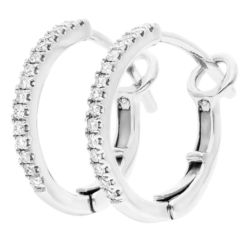
|
| Click on the Image |
|
|
Are Conflict-Free Diamonds Genuine?Back To Top |
Conflict-free diamonds are indeed genuine diamonds. These diamonds simply haven’t been used to support any civil wars or conflicts.
You can find conflict-free diamonds in both natural and lab-grown varieties.
|
|
Where Do Conflict-Free Diamonds Originate?Back To Top |
Diamonds come from two main sources: deep inside the earth or a laboratory. Natural diamonds form deep within the Earth’s crust, taking shape over millions of years under intense pressure to become the sparkling gems we recognize today.
Conflict-free diamonds are mined responsibly. They come from countries certified through the Kimberley Process (explained below), ensuring these diamonds aren’t used to fund civil conflicts.
Laboratory diamonds are created in a lab with advanced technologies and a controlled environment. So, they are conflict-free by virtue of this creation method.
|
|
What’s the Difference Between Conflict-Free And Ethically Sourced Diamonds?Back To Top |
Conflict-free diamonds don’t contribute to funding civil conflicts. Ethically sourced diamonds, however, go beyond this standard.
While avoiding support for conflict is crucial, it’s only part of the story. Ethically sourced diamonds take extra steps to ensure mining practices don’t harm communities or the environment.
Diamonds labeled as ethically sourced follow strict guidelines to uphold human rights, protect civil liberties, and minimize environmental damage.
Platinum Marquise Cut Diamond Solitaire Pendant |
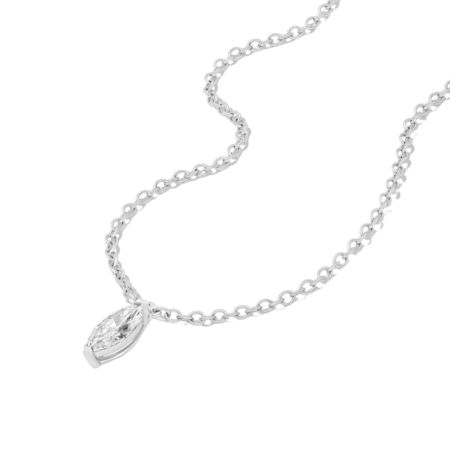
|
| Click on the Image |
|
|
Ethically Sourced Diamonds: Are Lab-Grown Gems the Answer?Back To Top |
Yes, lab-grown diamonds are indeed ethically sourced and conflict-free. Lab-created diamonds come free of any ethical concerns.
As the name suggests, these diamonds are crafted in a lab. This process involves fewer people, avoids intense labor, and has a much smaller environmental impact than traditional mining.
Using advanced technology, labs replicate the natural conditions that produce diamonds deep within the Earth but in a highly controlled setting.
Lab-grown diamonds possess the same brilliance, durability, and allure as their mined counterparts, often at a significantly lower cost. Unsurprisingly, their popularity continues to grow.
14K Rose Gold Lab-Grown Solitaire Ring |
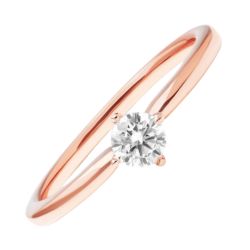
|
| Click on the Image |
|
|
What’s the Kimberley Process, And Can It Guarantee Conflict-Free Diamonds?Back To Top |
Understanding the Kimberley Process and Its Role in the Diamond Industry.
The Kimberley Process is a global effort to improve transparency and ensure accountability within the diamond industry. This initiative was developed to combat the sale of conflict diamonds mined and sold by rebel groups or insurgent forces to finance armed conflicts and civil wars.
|
|
A Collaborative Approach to Combat Conflict Diamonds.Back To Top |
The Kimberley Process is an international collaboration involving multiple stakeholders, including governments, industry representatives, and civil society organizations. This coalition works together to implement standards that prevent conflict diamonds from entering the legitimate diamond market, aiming to reduce the devastating impact these stones can have on conflict-prone regions.
| 14K Yellow Gold Emerald Cut Lab-Grown Diamond Stud Earrings |
|---|
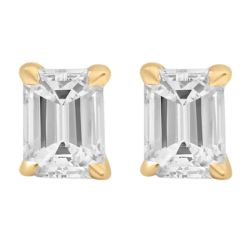
|
| Click on the Image |
|
|
Creating a Secure Chain of Custody for Diamonds.Back To Top |
Since its creation, the Kimberley Process has sought to create a secure chain of custody for diamonds, ensuring that every diamond traded between participating countries is certified as conflict-free. The initiative helps maintain a safe market from diamonds associated with violence and unrest by monitoring and controlling the export and import of rough diamonds.
|
|
Promoting Ethical Responsibility in the Diamond Trade.Back To Top |
With these protocols, the Kimberley Process has increased oversight within the diamond trade and promoted greater ethical responsibility among diamond-producing nations and companies. While challenges remain, the Kimberley Process protects communities affected by conflict and reinforces responsible practices in the diamond industry.
|
|
Protecting Communities and Reinforcing Industry Standards.Back To Top |
Despite ongoing obstacles, the Kimberley Process is crucial in safeguarding communities affected by conflict and advancing responsible practices in the diamond trade. The Kimberley Process fosters ethical awareness and accountability within the industry by upholding these standards.
14K Yellow Gold Oval Cut Lab Grown Diamond Stud Earrings 0.25 CTW |
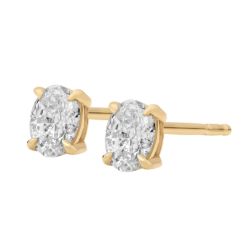
|
| Click on the Image |
|
|
How Can You Be Confident You’re Buying a Conflict-Free Diamond?Back To Top |
How Can You Be Confident You’re Buying a Conflict-Free Diamond?
The key is thorough research. To ensure your diamond is conflict-free, evaluate the jeweler, retailer, or vendor you plan to buy from.
Many jewelers may state that their diamonds are conflict-free and ethically obtained, but it’s up to you to confirm. Be sure to ask specific questions. Do they disclose the origin of their diamonds? Are their diamonds certified by the Kimberley Process (KPCS)? Have they implemented any additional safeguards beyond KPCS standards?
While the KPCS offers a foundational layer of security, it has limitations. Loopholes exist, and unfortunately, some sellers may take advantage of them. This is why reputable brands go the extra mile, surpassing the minimum requirements set by the KPCS to offer a higher assurance standard.
Platinum Four Prong Basket Solitaire Diamond Pendant 0.25 CTW |
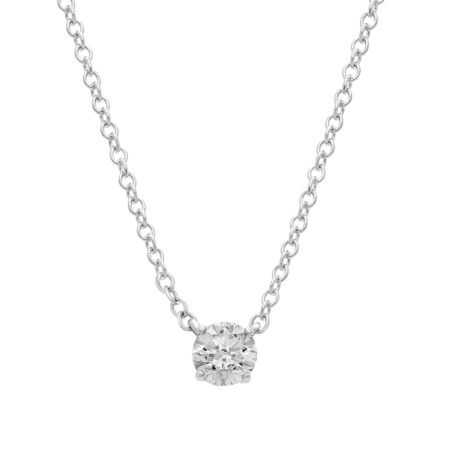
|
| Click on the Image |
14K White Gold Emerald Cut Lab-Grown Diamond Solitaire Pendant 0.25 CTW |
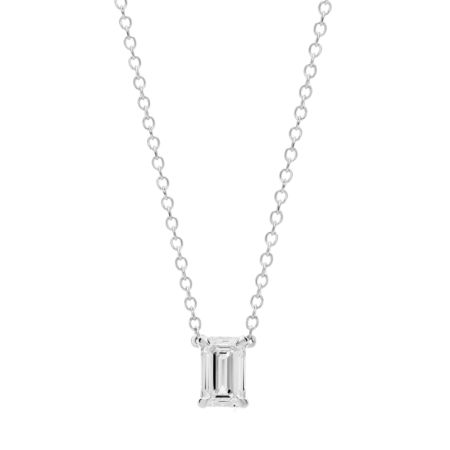
|
| Click on the Image |
Read More About Diamonds